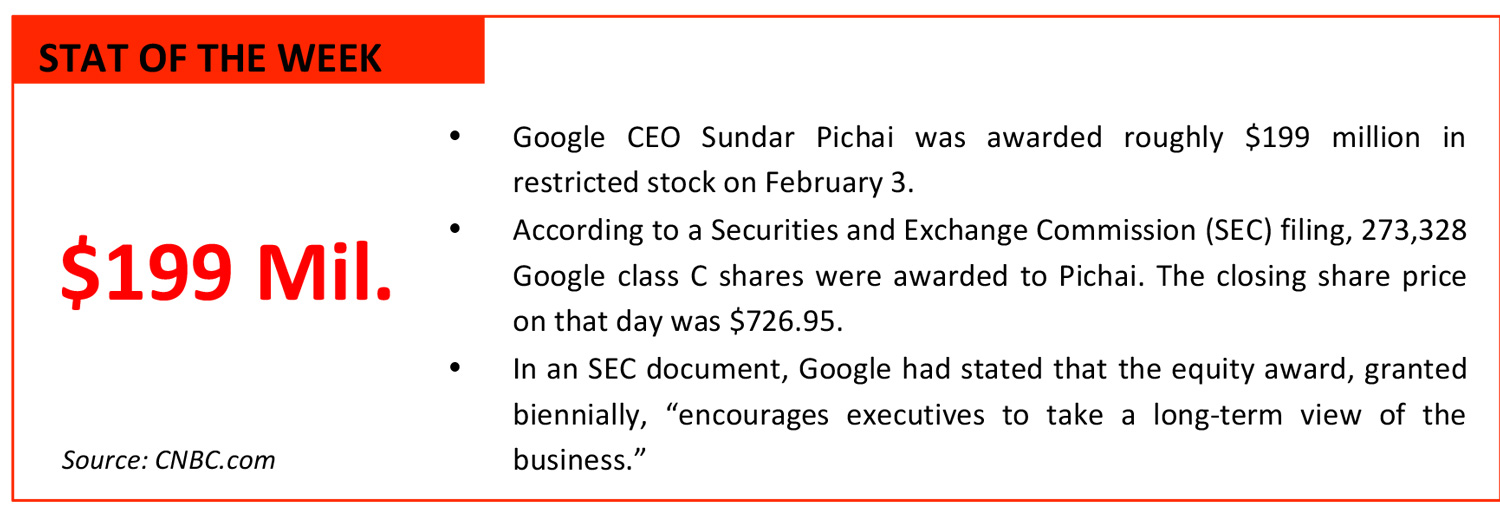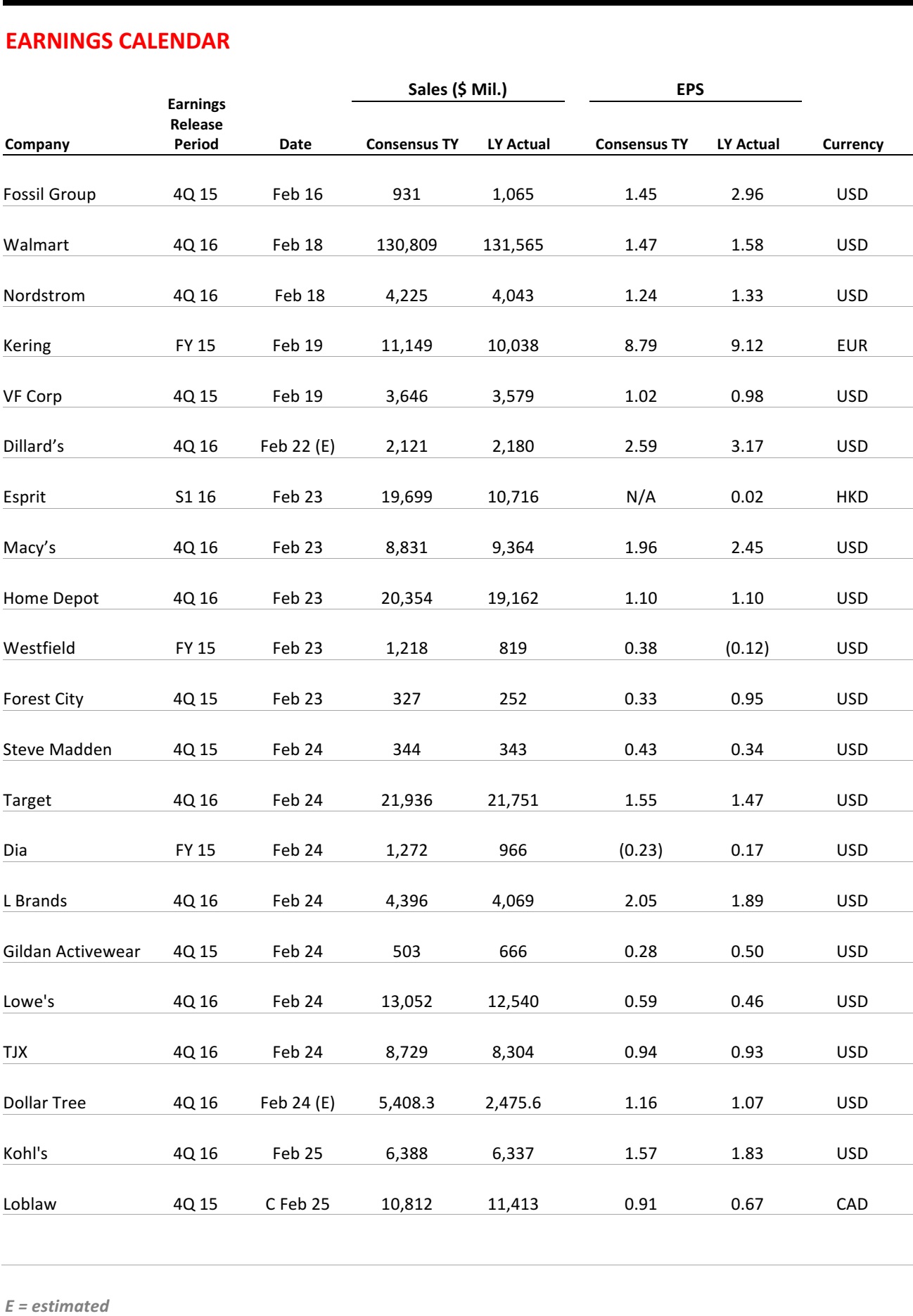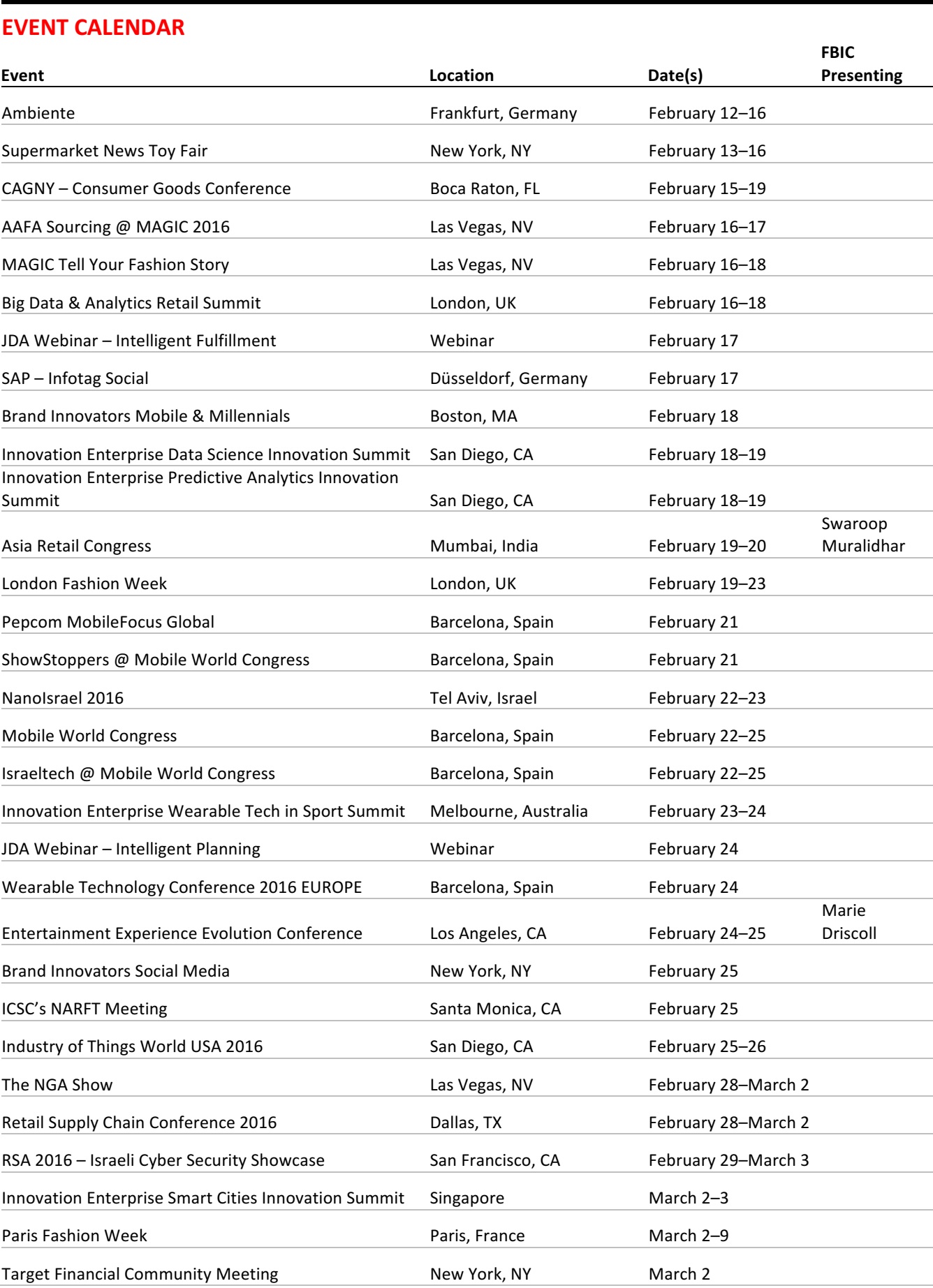FROM THE DESK OF DEBORAH WEINSWIG
It is that time of year again. As February 14 approaches, people across the globe are dearly hoping that their carefully crafted Valentine’s messages will win the attention of those they are pursuing.
We are talking, of course, about research firms and PR agencies pining for the media to pay attention to their Valentine’s Day spending estimates. Here, we summarize some of the latest estimates published for the US and UK, and offer our view on the importance of such seasonal events to retail.
How Big Is Valentine’s Day Spending?

Very big, is the short answer. Americans will spend fully $19.7 billion on loved ones this Valentine’s Day, says the National Retail Federation (NRF), based on its
Valentine’s Day Consumer Spending Survey, conducted by Prosper Insight and Analytics.
Some 55% of US consumers polled said they will mark Valentine’s Day, spending an average of $146.84 on products and services, up 3% from last year. Candy is the top Valentine’s category by number of shoppers, and is expected to account for $1.7 billion in sales, according to the NRF. In addition, an estimated $1.1 billion will be spent on greetings cards this year, along with $1.9 billion on flowers and $4.4 billion on jewelry.
We estimate that the NRF’s total spending figure of $19.7 billion will be equivalent to 7% of all US retail and food-service sales (ex fuel) in the month of February. (Given that the NRF’s figures include spending on other services such as event tickets, this is likely to be slightly overstating the figure’s real share of spending).
In the UK, retail-only spending on Valentine’s Day is estimated to reach £980 million (US$1.4 billion) this year, according to research agency Verdict Retail. That equates to 4.1% of estimated total February UK retail sales (ex fuel)—still a very significant share of a total month’s retail spending.
Seasonal Events Drive Footfall and Spending
The absolute retail value of seasonal events such as Valentine’s Day is less important than the market’s momentum and the ways retailers can use these events to drive footfall.
With regard to market momentum, the NRF is predicting robust growth for US Valentine’s Day spending this year (based on its consumer survey, which was conducted in the first half of January). But we are more cautious. Last year, Valentine’s Day fell on a Saturday, giving consumers more shopping hours and more opportunities to stay out later dining and drinking. We think this will provide very demanding comparatives—so, growth in spending may well prove muted this Valentine’s Day (and more still next year, when February 14 will fall on a Tuesday).
With regard to footfall, Valentine’s Day and other seasonal events can serve as pivots around which retailers can drive shopper interest through a sense of novelty and occasion. With e-commerce peeling away more functional shopping, retailers can use holidays such as Valentine’s Day (and Halloween and Easter) to pique consumers’ interest, and thus encourage footfall and impulse purchases. Furthermore, Valentine’s Day specifically helps fill the retail lull between New Year’s and Easter.
Despite these opportunities that Valentine’s Day presents to retailers, stores continue to lose share of Valentine’s Day spending. The NRF’s survey found that 27.9% of US consumers plan to buy online this year versus 25.1% in 2015; that total is up fully 11 percentage points in just six years.
As retail continues to change and functional shopping migrates online, we think more store-based retailers will move beyond traditional price promotions to focus on differentiation through the shopping experience, curation of ranges and exclusivity of product. In a world where shoppers can find a nearly endless range of products online, for cheap, seasonal experiences, done well, can give them a reason to return to stores.



US RETAIL EARNINGS

Source: Company reports
US RETAIL HEADLINES
 Cheap Smartphones to Propel App Spending Past $100 Billion
(February 10) Bloomberg
Cheap Smartphones to Propel App Spending Past $100 Billion
(February 10) Bloomberg
- According to data provider App Annie, worldwide mobile app store revenue will reach $101 billion in five years as smartphones become cheaper and data plans more accessible, drawing in consumers in developing countries. The number of smartphone and tablet users will more than double by 2020, to 6.2 billion, up from 2.6 billion today, the company forecasted.
- Some of the strongest growth will come from India, Indonesia, China, Mexico, Brazil and Turkey. Revenue generated per device will grow to $16.20 in 2020 from $15.40 today, boosted by spending in the Americas, Europe and the Middle East, even as average revenue declines slightly in the fast-growing Asia-Pacific region, App Annie predicted.
 Target CEO Brian Cornell Is Visiting Customers’ Homes
(January 20) Star Tribune
Target CEO Brian Cornell Is Visiting Customers’ Homes
(January 20) Star Tribune
- Target CEO Brian Cornell is meeting shoppers in their homes to get to know the company’s changing customer and adding 1,000 IT jobs to meet growing needs. So far, he and about a dozen key officers have met with Hispanic moms and single millennials in various cities to do some “fundamental ethnography work,” which is a new approach for the retail chain.
- Cornell plans to make the nation’s second-largest discount chain more nimble and better able to woo a generation of consumers who are digitally savvy and harder to pin down. While the bulk of Target’s sales still come from its stores, the company is facing steep competition from online retailers such as Amazon.com.
 Google’s Self-Driving Car Software Considered a Driver by US Agency
(February 9) Bloomberg
Google’s Self-Driving Car Software Considered a Driver by US Agency
(February 9) Bloomberg
- Federal regulators have said that they will interpret Google’s artificial intelligence system in its self-driving cars as a driver. The decision will help Google as it works to get its self-driving cars on US roads. In November, Google asked the National Highway Traffic Safety Administration for interpretation of safety standards in cars it seeks to produce that do not have traditional controls, such as a steering wheel or throttle and brake pedals.
- “If no human occupant of the vehicle can actually drive the vehicle, it is more reasonable to identify the ‘driver’ as whatever (as opposed to whoever) is doing the driving,” Paul Hemmersbaugh, the National Highway Traffic Safety Administration’s chief counsel, said in a February 4 letter. In Google’s case, its self-driving system “is actually driving the vehicle,” he wrote.
 US Retail Imports to Grow by 4.5% in First Half of 2016
(February 9) National Retail Federation
US Retail Imports to Grow by 4.5% in First Half of 2016
(February 9) National Retail Federation
- Import cargo volume at the nation’s major retail container ports is expected to decline year over year for the next few months, but the first half of the year should still amount to a 4.5% increase compared with the same period last year, according to the monthly Global Port Tracker report released today by the National Retail Federation (NRF) and Hackett Associates.
- “Retailers are carefully managing their inventories but still need to stock up on seasonal goods for spring and summer,” NRF Vice President for Supply Chain and Customs Policy Jonathan Gold said. “Comparisons with last year are difficult because of the surge of cargo after problems at West Coast ports ended, but we think consumers will continue to increase their spending this year and retailers will be ready.”
EUROPE RETAIL EARNINGS
 Source: Company reports
Source: Company reports
EUROPE RETAIL HEADLINES
 New Look Reports 5.6% YoY Sales Growth in Third Quarter
(February 9) Company press release
New Look Reports 5.6% YoY Sales Growth in Third Quarter
(February 9) Company press release
- British clothing retailer New Look reported 5.6% year-over-year sales growth, to £1,175 million (US$1,700 million), in its third quarter. Overall comparable sales were up 4.5% and UK comparable sales were up 4.3% year over year during the period. New Look’s UK comparable sales during the seven-week Christmas trading period were up 3.2%.
- Adjusted EBITDA for the period grew by 6.4% year over year, to £205 million (US$297 million), while adjusted profit before tax was up 38.9%, to £88 million (US$127 million). The company stated that its plans to expand in China are on track and that it will reach its goal of opening 85 stores in the country by the end of 2016.
 John Lewis Signs Deal with Online Fashion Retailer Finery
John Lewis Signs Deal with Online Fashion Retailer Finery
(
February 9) Retail-week.com
- John Lewis, one of Britain’s largest department store chains, has agreed to stock Finery’s products in six of its stores. Finery, a women’s clothing and accessories fashion brand, was founded last year and has already managed to build a 100,000-strong customer base and bring in £5 million (US$7.2 million) in revenue.
- Finery will have concessions in John Lewis’s Oxford Street and Sloane Square stores in London, and also in locations in Manchester, Cheadle, Birmingham and Liverpool, starting Friday, February 12. Finery founder Nickyl Raithatha said that this partnership will help “accelerate awareness” of the brand.
 Aldi Launches First Stores in South Australia
(February 8) Retailanalysis.igd.com
Aldi Launches First Stores in South Australia
(February 8) Retailanalysis.igd.com
- German supermarket chain Aldi has begun its expansion in South Australia by opening four new stores there. The stores, which feature a new look tailored for Australia, are all located in the suburbs of Adelaide.
- The grocer aims to open five more stores in March and 16 by the end of the year, in order to consolidate its position in South and Western Australia. With plans to open at least 50 stores in the long term, the company has also intensified its promotions. Aldi Australia reportedly spent AUD $28.9 million (US$20.5 million) on advertising in 2015.
 Groupe Casino to Sell Its Stake in Thai Grocer Big C Supercenter
(February 7) Ft.com
Groupe Casino to Sell Its Stake in Thai Grocer Big C Supercenter
(February 7) Ft.com
- French retailer Groupe Casino has announced that it will sell its stake in Thailand’s Big C Supercenter for €3.1 billion (US$3.5 billion) to TCC Group. This year, Casino announced a €4 billion (US$4.5 billion) deleveraging plan, which includes selling its stake in the Thai supermarket and its retail assets in Vietnam.
- The move is a key stage in Groupe Casino’s attempt to reduce its debt. The sale’s completion is expected by the end of March, and should bring the French retailer’s debt down by €3.3 billion (US$3.7 billion).
 Amazon Prime Launches in Belgium
(February 5) Ecomony.com
Amazon Prime Launches in Belgium
(February 5) Ecomony.com
- Amazon’s Prime membership program, which offers unlimited access to a collection of e-books and media and one-hour delivery on orders, is now available to customers in Belgium. The annual membership fee is €49 (US$55), and is lower than the fee in both the US (US$99) and in the UK (£79/US$88).
- For customers between the ages of 18 and 24, Amazon is offering annual membership at a discounted fee of €24 (US$27). The services in Belgium, however, are more limited than those offered in the US and the UK.
ASIA TECH HEADLINES
 IMJ Launches New US$52 Million Fund Focused on Japanese Startups
(February 11) TechinAsia
IMJ Launches New US$52 Million Fund Focused on Japanese Startups
(February 11) TechinAsia
- IMJ Investment Partners has a new fund that, although smaller than both Rakuten’s US$86.93 million fund and Globis’s US$139.50 million fund, puts it on par with other well-known Japanese venture capital firms such as Gree Ventures, which has a US$43.59 million fund.
- IMJ’s fund will mainly contribute to startups in stages above series A, and the firm is looking for companies to disrupt large traditional markets such as banking, healthcare, education and security.
 SK Telecom and Ericsson to Build Pilot 5G Network
(February 11) TechCrunch
SK Telecom and Ericsson to Build Pilot 5G Network
(February 11) TechCrunch
- SK Telecom and Ericsson will build a network that connects handsets to wireless networks and wired infrastructure in order to trial a technology they have been testing in lab settings.
- “5G will be a hundred times faster than LTE networks, with [the] data transfer rate projected to be over 20 Gbps. When 5G is commercialized, we will be able to transfer…data such as holograms and virtual reality that we cannot transfer in the current (4G) speed,” said SK Telecom.
 Chinese Tech Group Led by Qihoo 360 Bids US$1.2 Billion for Browser Maker Opera
(February 11) TechCrunch
Chinese Tech Group Led by Qihoo 360 Bids US$1.2 Billion for Browser Maker Opera
(February 11) TechCrunch
- Norway-headquartered browser maker Opera Software confirmed that it has received a US$1.2 billion acquisition offer from a group led by Chinese consumer tech companies Qihoo 360 and Kunlun Tech.
- The consortium is called Golden Brick. Qihoo 360 is one of China’s most visible (and controversial) Internet companies, which recently went private in a US$9.3 billion deal. Newly listed games firm Kunlun snapped up a majority, 60% share, in gay dating service Grindr last month. Yonglian Investment is the last member of the consortium.
 India’s Paytm Is Raising Another US$400 Million to Build Out Its New Payment Bank
(February 11) TechCrunch
India’s Paytm Is Raising Another US$400 Million to Build Out Its New Payment Bank
(February 11) TechCrunch
- Just months after it reportedly raised US$680 million, Paytm is looking to raise US$400 million by June to help with the launch of its new payments business, Paytm Payment Bank, say sources close to the company.
- In order to fund customer discounts and fuel expansion, Flipkart, Snapdeal and Paytm have collectively raised over US$4 billion since 2014. That was also the same year that Amazon CEO Jeff Bezos vowed to invest US$2 billion in the company’s India operations.
 Amazon Expands Logistics Reach in China
(February 10) Channel NewsAsia
Amazon Expands Logistics Reach in China
(February 10) Channel NewsAsia
- Last year, Amazon registered its Chinese subsidiary, Beijing Century Joyo Courier, as a freight forwarder—a type of broker that does not own ships, but handles customs and other documentation—with China’s transport ministry. The move allowed Amazon to export cargo out of the country.
- The company’s plans include handling cargo and customs for goods headed to ports in Japan, Europe and the US. Analysts say the move could help Amazon eventually offer shipping services to other companies and compete with the likes of UPS and DHL Worldwide Express.
LATAM RETAIL HEADLINES
 Latin American Tech Update
(February 10) Latinone.com
Latin American Tech Update
(February 10) Latinone.com
- Despite Yahoo’s closure of operations in Mexico City, there has been much anticipation of the opening of Google’s new campus in São Paulo, Brazil, which is targeted for mid-February.
- Google vehicles began capturing images in Brazil in early January for integration into its Google Street View database, and Apple has added traffic information to its Maps for users in Mexico to better predict travel times. Apple had previously confirmed plans to open retail stores in Mexico and Argentina, and Samsung is planning to expand in Brazil to increase the coverage of its Samsung Pay platform.
 Venezuelan Malls Halve Opening Times
(February 8) BBC
Venezuelan Malls Halve Opening Times
(February 8) BBC
- Shopping centers in Caracas, Venezuela, plan to halve their opening times to four hours a day in order to comply with a government energy-rationing order.
- Drought caused by El Niño has brought water in the country’s hydroelectric dams to critically low levels, and businesspeople expect the cut in hours to hurt banks, health and medical centers, pharmacies, supermarkets and, particularly, restaurants that depend on electricity to refrigerate and preserve food.
 Colombian Menswear Chain Gef Expands in Menswear
(February 8) WWD
Colombian Menswear Chain Gef Expands in Menswear
(February 8) WWD
- Apparel chain Gef has launched Gef Men to benefit from strong menswear sales in Colombia, where it plans to operate 10 shops this year. Moreover, Gef plans to double its size, to nearly 400 stores with sales of more than US$400 million, by 2020.
- Last year, Gef’s menswear sales grew by 20%, compared to just 6%–7% for womenswear. The expansion should help grow menswear to 34% of Gef’s total annual sales, compared to 29% today.
 Falabella Plans to Open Third Store in Brazil, Plus Two More in 2017
(February 8) Emol.com
Falabella Plans to Open Third Store in Brazil, Plus Two More in 2017
(February 8) Emol.com
- Despite the current situation of the Brazilian economy, Chilean retailer Falabella continues to stress that it is interested in expanding in the country, and it has announced plans to open its third store in Brazil under its home improvement brand, Sodimac.
- The company’s plans call for a total of 61 stores in Brazil by 2017. These will account for 44% of the US$4 million earmarked for the opening of 131 new stores. Sodimac and construction material store Dicico are part of the assets acquired in 2013 from Markinvest Gestão de Participações, in which Falabella holds a 50.1% stake.
 Colombian Fashion Institute Inexmoda Plans Expansion in Latin America
(February 4) WWD
Colombian Fashion Institute Inexmoda Plans Expansion in Latin America
(February 4) WWD
- Export and fashion institute Inexmoda plans to expand its Épica designer development group to include Mexico, and to offer fashion and consulting services in Ecuador, Central America and Peru. The move is expected to increase revenues by 15%, to nearly US$7 million, by 2019.
- Inexmoda also plans to continue to expand Colombiatex and Colombiamoda, which generate more than US$600 million in potential sourcing revenues annually and have turned Medellín into a top fashion capital in Latin America.



 Very big, is the short answer. Americans will spend fully $19.7 billion on loved ones this Valentine’s Day, says the National Retail Federation (NRF), based on its Valentine’s Day Consumer Spending Survey, conducted by Prosper Insight and Analytics.
Some 55% of US consumers polled said they will mark Valentine’s Day, spending an average of $146.84 on products and services, up 3% from last year. Candy is the top Valentine’s category by number of shoppers, and is expected to account for $1.7 billion in sales, according to the NRF. In addition, an estimated $1.1 billion will be spent on greetings cards this year, along with $1.9 billion on flowers and $4.4 billion on jewelry.
We estimate that the NRF’s total spending figure of $19.7 billion will be equivalent to 7% of all US retail and food-service sales (ex fuel) in the month of February. (Given that the NRF’s figures include spending on other services such as event tickets, this is likely to be slightly overstating the figure’s real share of spending).
In the UK, retail-only spending on Valentine’s Day is estimated to reach £980 million (US$1.4 billion) this year, according to research agency Verdict Retail. That equates to 4.1% of estimated total February UK retail sales (ex fuel)—still a very significant share of a total month’s retail spending.
Very big, is the short answer. Americans will spend fully $19.7 billion on loved ones this Valentine’s Day, says the National Retail Federation (NRF), based on its Valentine’s Day Consumer Spending Survey, conducted by Prosper Insight and Analytics.
Some 55% of US consumers polled said they will mark Valentine’s Day, spending an average of $146.84 on products and services, up 3% from last year. Candy is the top Valentine’s category by number of shoppers, and is expected to account for $1.7 billion in sales, according to the NRF. In addition, an estimated $1.1 billion will be spent on greetings cards this year, along with $1.9 billion on flowers and $4.4 billion on jewelry.
We estimate that the NRF’s total spending figure of $19.7 billion will be equivalent to 7% of all US retail and food-service sales (ex fuel) in the month of February. (Given that the NRF’s figures include spending on other services such as event tickets, this is likely to be slightly overstating the figure’s real share of spending).
In the UK, retail-only spending on Valentine’s Day is estimated to reach £980 million (US$1.4 billion) this year, according to research agency Verdict Retail. That equates to 4.1% of estimated total February UK retail sales (ex fuel)—still a very significant share of a total month’s retail spending.




 Source: Company reports
Source: Company reports John Lewis Signs Deal with Online Fashion Retailer Finery
(February 9) Retail-week.com
John Lewis Signs Deal with Online Fashion Retailer Finery
(February 9) Retail-week.com
 Chinese Tech Group Led by Qihoo 360 Bids US$1.2 Billion for Browser Maker Opera
(February 11) TechCrunch
Chinese Tech Group Led by Qihoo 360 Bids US$1.2 Billion for Browser Maker Opera
(February 11) TechCrunch
 Latin American Tech Update
(February 10) Latinone.com
Latin American Tech Update
(February 10) Latinone.com
 Falabella Plans to Open Third Store in Brazil, Plus Two More in 2017
(February 8) Emol.com
Falabella Plans to Open Third Store in Brazil, Plus Two More in 2017
(February 8) Emol.com

